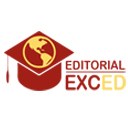Invisible work in the Higher Education teaching profession
DOI:
https://doi.org/10.58594/rtest.v3i3.87Keywords:
Invisible work, teaching profession, Higher Education, self-efficacy, stress, labor desertionAbstract
In this article, the biased vision of university work is analyzed, an evident magnification of the publication of scientific results is discovered, in relation to the other missions: training and extension work. Two well-defined work areas can be distinguished: a visible work area in which the publication is located and another invisible work area, work that is forgotten and which, however, comprises the bulk of the institutional work. A fair evaluation of the investigation is advocated, articulated with the other missions, the negative effect of the absence of national registers of researchers is valued, which mechanism of comparison, energize and facilitation of aid to the investigative processes; Likewise, the present and future of scientific journals are analyzed according to the global changes that are taking place in their conception, the observance of ethics in publication. We reflect on the importance of carrying out a much more inclusive, objective and fair process for the evaluation of research, so that other results measurement indices are taken into account, in an institutional context of support for research and promotion of inter-academic cooperation, in order to make teaching work a healthy professional exercise with the identification and prevention of the causes that mean the congruence between work, stress and its effects on the desertion of teachers, situations that make it advisable to meditate on the need to correct the current university labor order.
Keywords:
Invisible work, teaching profession, Higher Education, self-efficacy, stress, labor desertion.
RESUMEN
En el presente artículo se analiza la visión sesgada del quehacer universitario, se revela una evidente magnificación de la publicación de resultados científicos, con relación a las restantes misiones: la formación y la labor extensionista. Se distinguen dos áreas de trabajo bien delimitadas: un área de trabajo visible en la que se ubica la publicación y otra área de trabajo invisible, trabajo que se olvida y que, sin embargo, comprende el grueso del quehacer institucional. Se aboga por una valoración justa de la investigación, articulada con las demás misiones, se valora el negativo efecto de la ausencia de registros nacionales de investigadores, cuál mecanismo de comparación, dinamización y facilitación de ayuda a los procesos investigativos; así mismo se analiza el presente y futuro de las revistas científicas de acuerdo con los cambios globales que se están produciendo en su concepción, la observancia de la ética en la publicación. Reflexionamos sobre la importancia de llevar a cabo un proceso mucho más integrador, objetivo y justo para la evaluación de la investigación, de modo que sean tomados en cuenta otros índices de medición de resultados, en un contexto institucional de apoyo a la investigación y promoción de la cooperación interacadémica, a fin de hacer del trabajo docente un sano ejercicio profesional con la identificación y prevención de las causas que significan la congruencia entre trabajo, estrés y sus efectos en la deserción de los docentes, situaciones que hacen recomendable meditar en torno a la necesidad de perfeccionar el orden laboral universitario actual.
Palabras clave:
Trabajo invisible, profesión docente, Educación Superior, autoeficacia, estrés, deserción laboral.
Downloads
References
Asaolu, O. S., Jaiyeola, T. G., Usikalu, M. R., Gayawan, E., Atolani, O., & Adeyemi, O. S. (2022). U-index: A new Universal metric as unique indicator of researcher’s contributions to academic knowledge. Scientific African, 16. DOI: https://doi.org/10.1016/j.sciaf.2022.e01231
Basso, A., & di Tollo, G. (2022). Prediction of UK research excellence framework assessment by the departmental h-index. European Journal of Operational Research, 296(3), 1036-1049. DOI: https://doi.org/10.1016/j.ejor.2021.05.006
Baumann, S. (2022). Research profile clusters among lecturers in non-traditional higher education. An exploratory analysis in the Swiss context. International Journal of Educational Research Open, 3. DOI: https://doi.org/10.1016/j.ijedro.2022.100182
Bornmann, L., Ganser, C., & Tekles, A. (2022). Simulation of the h index use at university departments within the bibliometrics-based heuristics framework: Can the indicator be used to compare individual researchers? Journal of Informetrics, 16(1). DOI: https://doi.org/10.1016/j.joi.2021.101237
Cope Bill & Phillip Angus. (2014). The Future of the Academic Journal (Second). Chandos Publishing.
Crosthwaite, P., Ningrum, S., & Lee, I. (2022). Research trends in L2 written corrective feedback: A bibliometric analysis of three decades of Scopus-indexed research on L2 WCF. Journal of Second Language Writing, 58. DOI: https://doi.org/10.1016/j.jslw.2022.100934
Daumiller, M., & Dresel, M. (2020). Teaching and research: Specificity and congruence of university faculty achievement goals. International Journal of Educational Research, 99. DOI: https://doi.org/10.1016/j.ijer.2019.08.002
Diego Rosselli, M. (2018). Navegando por mares inciertos: El futuro de las revistas científicas en Colombia. Acta Neurológica Colombiana, 34(3), 167-168. DOI: https://doi.org/10.22379/24224022207
Dwivedi, Y. K., Kshetri, N., Hughes, L., Slade, E. L., Jeyaraj, A., Kar, A. K., Baabdullah, A. M., Koohang, A., Raghavan, V., Ahuja, M., Albanna, H., Albashrawi, M. A., Al-Busaidi, A. S., Balakrishnan, J., Barlette, Y., Basu, S., Bose, I., Brooks, L., Buhalis, D., … Wright, R. (2023). Opinion Paper: “So what if ChatGPT wrote it?” Multidisciplinary perspectives on opportunities, challenges and implications of generative conversational AI for research, practice and policy. International Journal of Information Management, 71. DOI: https://doi.org/10.1016/j.ijinfomgt.2023.102642
Ferreira, J. B. (2022). Exhausted and Not Doing Enough? The Productivity Paradox of Contemporary Academia. She Ji: The Journal of Design, Economics, and Innovation, 8(2), 181-191. DOI: https://doi.org/10.1016/j.sheji.2022.05.001
Fonseca-Sosa Fernando Karel. (2022). Valor actual del índice H para estimar la calidad del investigador. Revista Hispanoamericana de Hernia, 10(1), 1-2.
Fry, C. V., Lynham, J., & Tran, S. (2023). Ranking researchers: Evidence from Indonesia. Research Policy, 52(5). DOI: https://doi.org/10.1016/j.respol.2023.104753
Gomez, C. J., Herman, A. C., & Parigi, P. (2020). Moving more, but closer: Mapping the growing regionalization of global scientific mobility using ORCID. Journal of Informetrics, 14(3). DOI: https://doi.org/10.1016/j.joi.2020.101044
Kaptay, G. (2020). The k-index is introduced to replace the h-index to evaluate better the scientific excellence of individuals. Heliyon, 6(7). DOI: https://doi.org/10.1016/j.heliyon.2020.e04415
Liu, J., Guo, X., Xu, S., Song, Y., & Ding, K. (2023). A new interpretation of scientific collaboration patterns from the perspective of symbiosis: An investigation for long-term collaboration in publications. Journal of Informetrics, 17(1). DOI: https://doi.org/10.1016/j.joi.2022.101372
Lozada-Martinez, I. D., Navarro-Pulido, N., Picón-Jaimes, Y. A., Dominguez-Alvarado, G., Cabrera-Vargas, L. F., Torregrosa-Almonacid, L., Guevara-Cruz, O., Narvaez-Rojas, A. R., Bolaño-Romero, M. P., Acevedo-Aguilar, L. M., Mass-Hernández, L. M., Llamas-Nieves, A. E., Acevedo-López, D., Diaz Vallejo, J. A., Rodriguez-Gutierrez, M. M., Escobar-Marulanda, V., Ochoa Carrillo, K. D., Doncel Martin, A. F., & Hernández-Acosta, Y. V. (2022). Surgical research in Colombia part 2: Scientific production of Colombian academic surgeons. Annals of Medicine and Surgery, 82. DOI: https://doi.org/10.1016/j.amsu.2022.104678
Monroy-Peña, M. C., Olvera-Cuellar, M., Cruz-Resendiz, J. C., & Vite-Rojo, A. D. (2023). Contenidos Educativos Digitales en el proceso enseñanza aprendizaje, estrategia para el desarrollo del aprendizaje significativo. Revista Mexicana De Investigación E Intervención Educativa, 2(1), 26–33.
Nikkanen, J., & Puuska, H.-M. (2022). Researchers’ profiles in the Finnish Research Information Hub. Procedia Computer Science, 211, 206-210. DOI: https://doi.org/10.1016/j.procs.2022.10.193
Olmos-Lopez, P., Prudencio, F. E., & Novelo, A. (2022). Mexican economics professors’ publication: Three case studies. English for Specific Purposes, 66, 131-143. DOI: https://doi.org/10.1016/j.esp.2022.01.002
Palavesm, K., & Joorel, J. S. (2022). IRINS: Implementing a Research Information Management System in Indian Higher Education Institutions. Procedia Computer Science, 211, 238-245. DOI: https://doi.org/10.1016/j.procs.2022.10.197
Patel, P. A., Gopali, R., Reddy, A., & Patel, K. K. (2021). The relative citation ratio and the h-index among academic ophthalmologists: A retrospective cross-sectional analysis. Annals of Medicine and Surgery, 71. DOI: https://doi.org/10.1016/j.amsu.2021.103021
Peiser, G., Pratt, A., & Putwain, D. (2022). Student teachers’ views about the university’s research contribution to professional knowledge development. Teaching and Teacher Education, 112. DOI: https://doi.org/10.1016/j.tate.2022.103647
Pulikowski, A., & Matysek, A. (2021). Searching for LIS scholarly publications: A comparison of search results from Google, Google Scholar, EDS, and LISA. The Journal of Academic Librarianship, 47(5). DOI: https://doi.org/10.1016/j.acalib.2021.102417
Rodríguez Felipe, M., Veitia Cabarrocas, F., Sarduy Bermúdez, L., Toledo Pimentel, B. F., Crespo Echavarría, B. M., Herrera Méndez, Y., Rodriguez Felipe, M., Veitia Cabarrocas, F., Sarduy Bermúdez, L., Toledo Pimentel, B. F., Crespo Echavarría, B. M., & Herrera Méndez, Y. (2023). Caracterización de la producción científica del claustro docente en la especialidad de Periodoncia. EDUMECENTRO, 15.
Rodríguez Muñoz, R., Socorro Castro, A. R., León González, J. L., Rodríguez Muñoz, R., Socorro Castro, A. R., & León González, J. L. (2021). El índice H y la identidad digital de los investigadores en los sistemas científico-tecnológicos. Revista Universidad y Sociedad, 13(5), 165-174.
Sasvari, P., Bakacsi, G., & Urbanovics, A. (2022). Scientific career tracks and publication performance—Relationships discovered in the Hungarian academic promotion system. Heliyon, 8(3). DOI: https://doi.org/10.1016/j.heliyon.2022.e09159
Schmiedehaus, E., Cordaro, M., Perrotte, J., Stern, M., Dailey, S., & Howard, K. (2023). The great resignation in higher education: An occupational health approach to understanding intentions-to-quit for faculty in higher education. Teaching and Teacher Education, 123. DOI: https://doi.org/10.1016/j.tate.2022.103992
Scimago, G., & Citas, R. (2006). El índice h de Hirsch: Aportaciones a un debate. El profesional de la información, 15(4), 304-306. DOI: https://doi.org/10.3145/epi.2006.jul.08
Taşkın, Z., Doğan, G., Kulczycki, E., & Zuccala, A. A. (2021). Self-Citation Patterns of Journals Indexed in the Journal Citation Reports. Journal of Informetrics, 15(4). DOI: https://doi.org/10.1016/j.joi.2021.101221
Wiklund Gustin, L., Fredriksson, L., & Rakovshik, S. G. (2020). Nursing teachers’ experiences of the process of recovery while participating in a group programme for reducing work-related stress: A qualitative content analysis. Nurse Education in Practice, 48. DOI: https://doi.org/10.1016/j.nepr.2020.102870
Xiong, Z., Peng, X., Yang, L., Lou, W., & Zhao, S. X. (2023). Motivation for downloading academic publications. Library & Information Science Research, 45(2). DOI: https://doi.org/10.1016/j.lisr.2023.101239
Yin, H., Han, J., & Perron, B. E. (2020). Why are Chinese university teachers (not) confident in their competence to teach? The relationships between faculty-perceived stress and self-efficacy. International Journal of Educational Research, 100. DOI: https://doi.org/10.1016/j.ijer.2019.101529
Published
How to Cite
Issue
Section
License
Copyright (c) 2023 Reinaldo Requeiro-Almeida, Yumila Pupo-Cejas, Orlando Gualberto Rodríguez del Rey-Piña

This work is licensed under a Creative Commons Attribution-NonCommercial 4.0 International License.
The authors retain the copyright, granting the Journal the right to first publication of the work. The authors assign the journal the rights to exploit the work, authorizing its distribution and public communication for non-commercial purposes. The authors retain the moral rights to the published work. The economic rights belong to the Journal.












